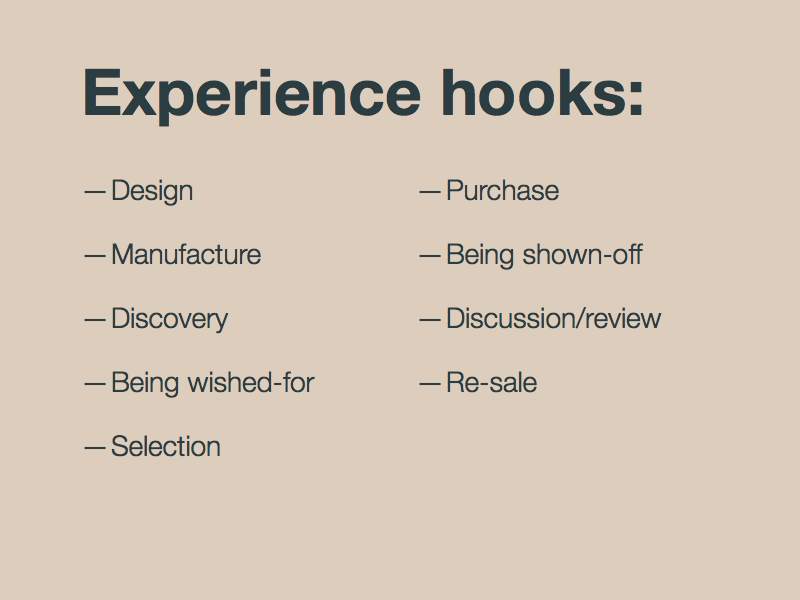From Pixels to Plastic
There are two ways to think about purchasing books.
The traditional way is to think about the purchase moment itself. If we problematise Amazon, say, in that way, all we concentrate on is optimising two processes: One, driving people to books. Two, improving the e-commerce funnel.
However, books are people too. Instead we can think about how we meet, get to know, and live alongside books. Where do we cross paths? How do we meet? What are the moments of meaningful engagement?
We could call these moments ‘experience hooks’—moments in our life with a book that signify change and meaning, and we can design for those.
For books, we’ve got these, off the top of my head [read out].
Amazon are very successful at making these experience hooks more engaging by having tools that meet them directly. They take a process, and wrap it in a self-contained tool.
So how would we take the same approach to our experience of all kinds of things we do with our computers everyday… like the weather, or news, or comics?
We already have an approach to take. In the user interface world, there’s been an explosion in the use of widgets.
Widgets are small, self-contained bits of functionality that embody an activity
You check the weather or do currency conversion, instead of using a news website that has the capacity to tell you the weather if you ask, or performing a calculation on a more generic thing.
A desktop widget for checking the weather embodies the activity of quickly glancing to see the current weather, and wraps up that pretty complex behaviour into a single unit that we can recommend to other people. this is as opposed to having a weather website that has to cater to skimmers and in-depth visitors, and leaving me to figure out how I’m going to use it.
I can collect widgets that help with my own collection of personal activities, and even discover new activities that i wouldn’t have thought up on my own.
